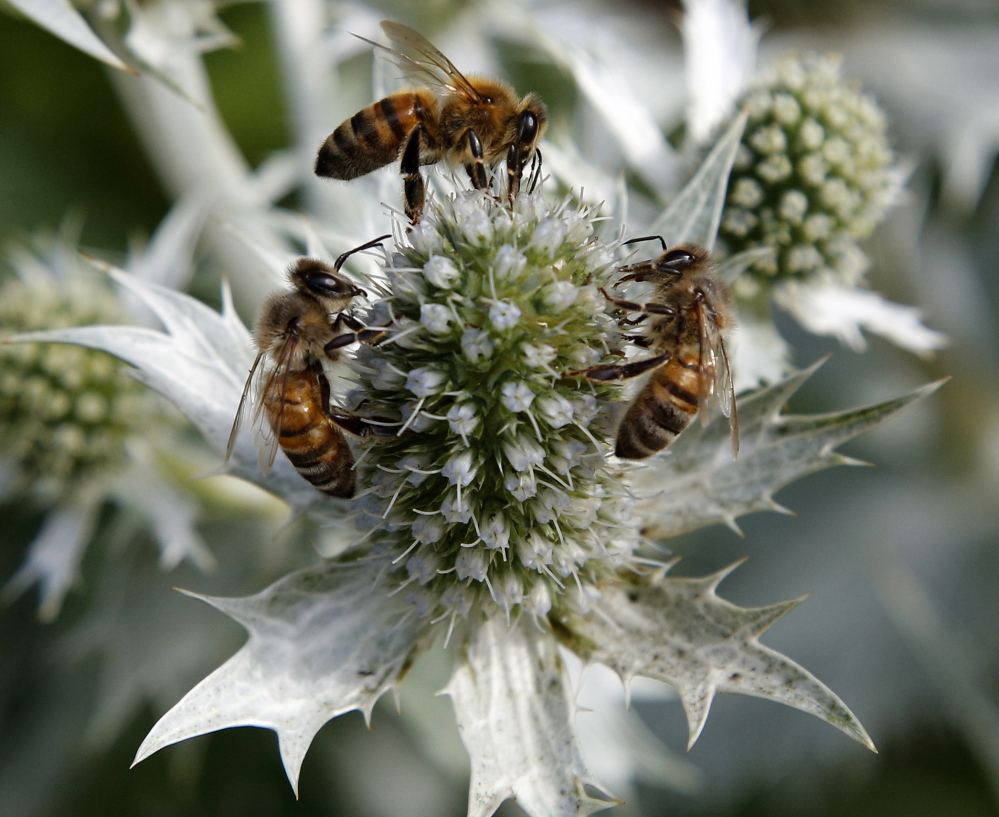It was one of those mysteries no one cracked for years but gripped many: What’s killing all the bees?
In Brevard County, Fla., nearly 12 million bees expired in 2011 in a great dying of almost biblical proportions. Then came news last year that 37 million bees – 37 million – had died that month at a Canadian beekeeping operation. That same month, Oregonians arrived at a Target to find 25,000 bumblebee corpses in the parking lot.
In the past several weeks, a spate of studies have appeared in scientific journals suggesting the culprit behind such deaths are widely-used pesticides called neonicotinoids.
And it’s not just bees that have been impacted, researchers say. A study published in Nature on Wednesday found bird populations in the Netherlands dropped more sharply in areas where neonicotinoid use was highest. “Our results suggest that the impact of neonicotinoids on the natural environment is even more substantial than has recently been reported and is reminiscent of the effects of persistent insecticides in the past,” the study said.
Around 95 percent of the insecticide – first introduced in the 1990s and produced by firms such as Bayer and Syngenta –winds up in the wider environment, the Guardian reported. The scientists say it kills insects birds need to survive and makes it difficult to provide for chicks.
“All the other studies (on harm caused by neonicotinoids) build up from toxicology studies,” Hans de Kroon, an ecologist at the Netherlands’ Radboud University who led the study, told the Guardian. “But we approached this completely from the other end. We started with the bird population data and tried to explain the declines. Our study really makes the evidence complete that something is going on here. We can’t go on like this any more. It has to stop.”
Others discern fewer clear-cut answers in bee collapse and think the science is far from settled. Some think disease-carrying parasites such as the Varroa mite may be the leading factor behind the deaths.
“Even though all the evidence points to various parasites and diseases being the true cause of poor bee health, we are keen to do everything in our power to give consumers confidence in our products,” Ruediger Scheitza, head of strategy at Bayer CropScience, said last year.
Dave Goulson of the University of Sussex, who has studied neonicotinoids for three years, said this defense is similar to what the tobacco industry deployed 50 years ago. “The reality is if you care about the environment, you should care about this,” he told The Washington Post in a phone interview. “We’re wiping insects off of many surfaces of the globe and it’s hard to think what won’t be affected by this wholesale loss of biodiversity.”
Goulson was one of dozens of scientists who published another report last month hailed as the most detailed assessment of the insecticides to date. The four-year study released last month concluded that neonicotinoids – on which farmers spend $2.6 billion annually and apply routinely – are threatening the world’s food supplies. The crux of the findings focused on creatures vital to global food production – such as bees, worms and birds – suffering the most harm.
“The evidence is very clear,” Jean-Marc Bonmatin, of France’s National Center for Scientific Research, told the Guardian. “Far from protecting food production, the use of neonicotinoid insecticides is threatening the very infrastructure which enables it.”
Copy the Story LinkSend questions/comments to the editors.



Success. Please wait for the page to reload. If the page does not reload within 5 seconds, please refresh the page.
Enter your email and password to access comments.
Hi, to comment on stories you must . This profile is in addition to your subscription and website login.
Already have a commenting profile? .
Invalid username/password.
Please check your email to confirm and complete your registration.
Only subscribers are eligible to post comments. Please subscribe or login first for digital access. Here’s why.
Use the form below to reset your password. When you've submitted your account email, we will send an email with a reset code.